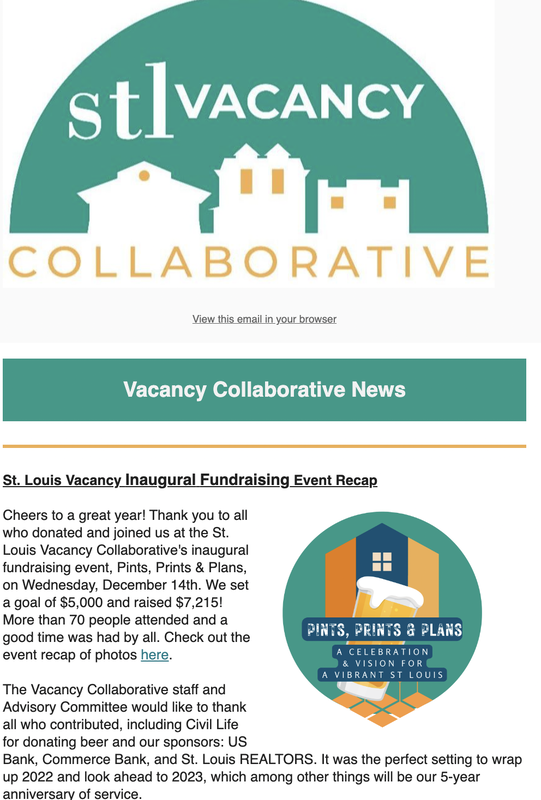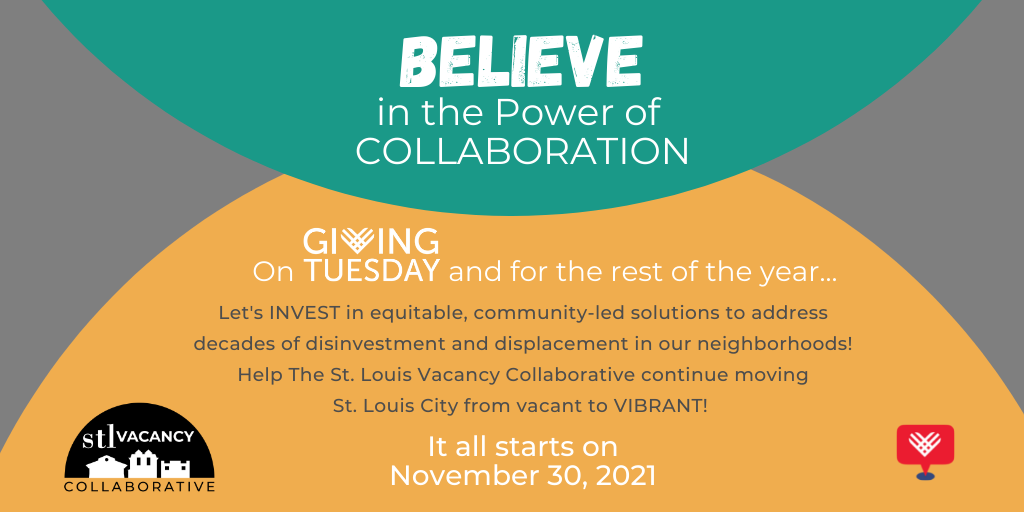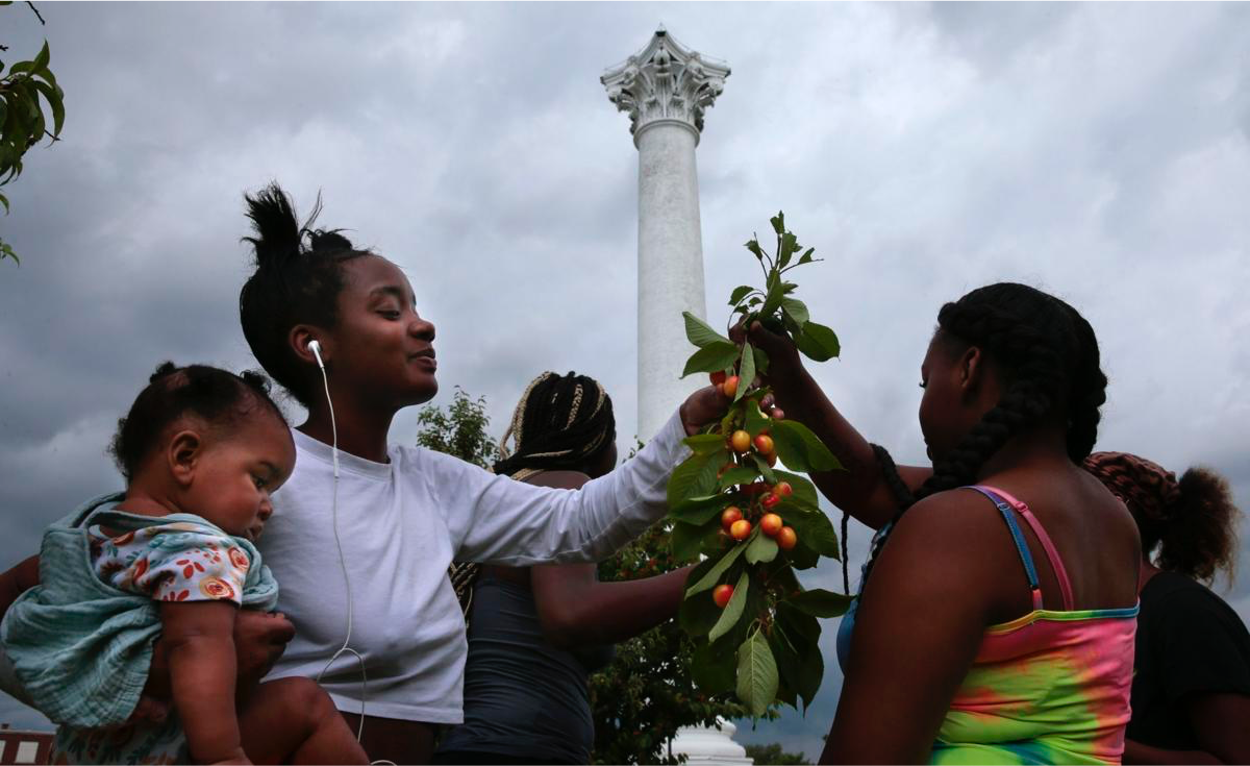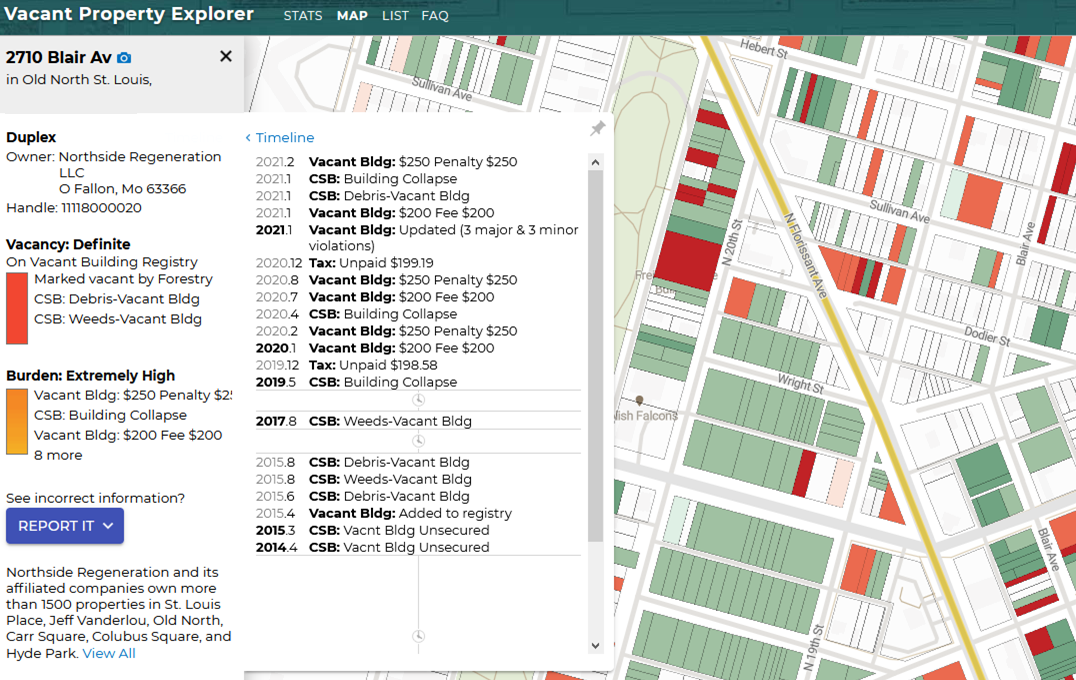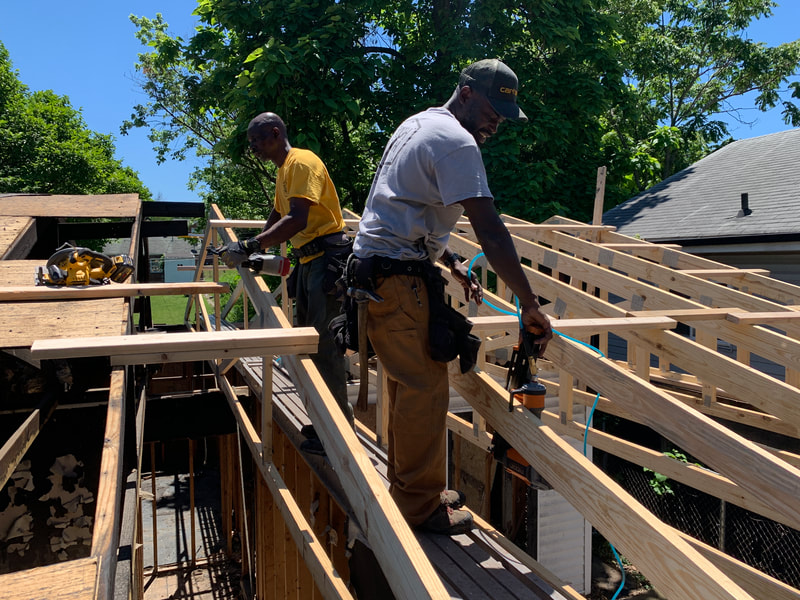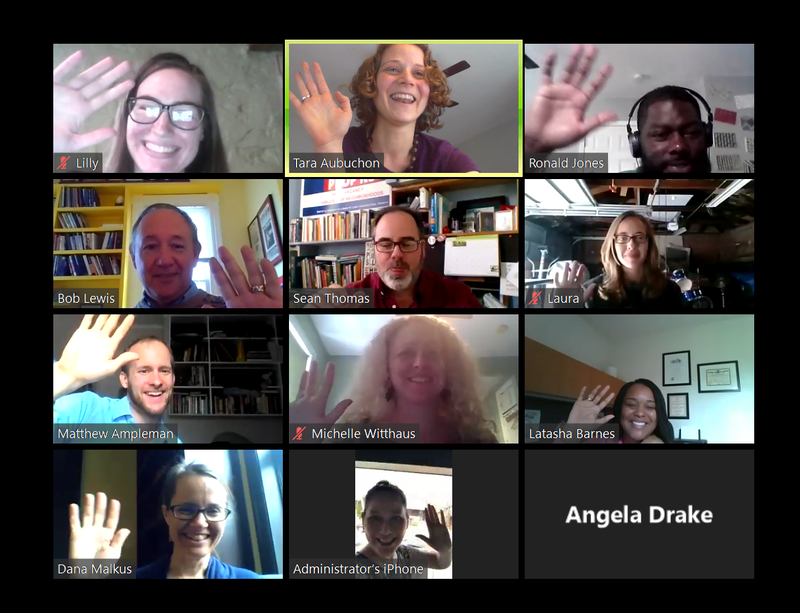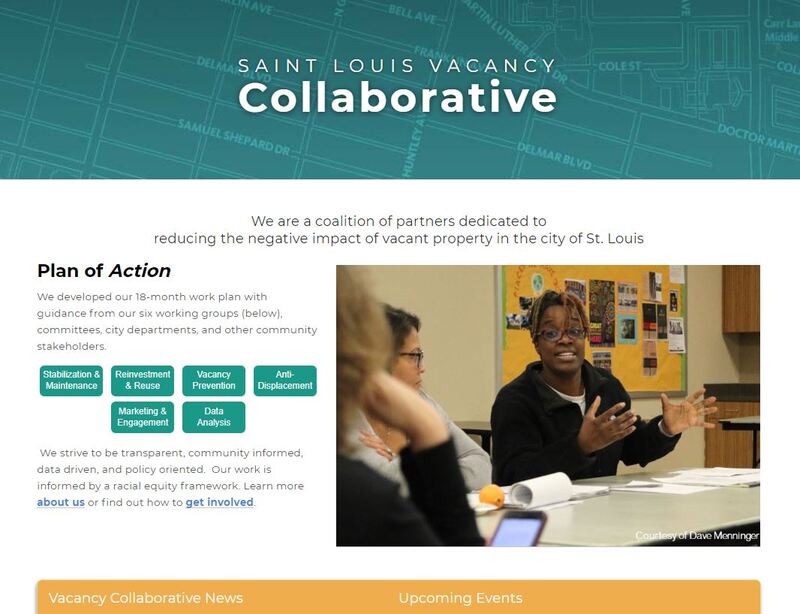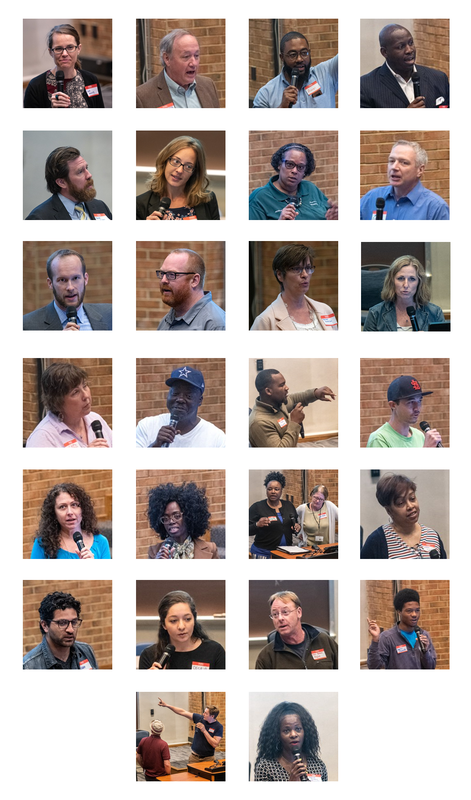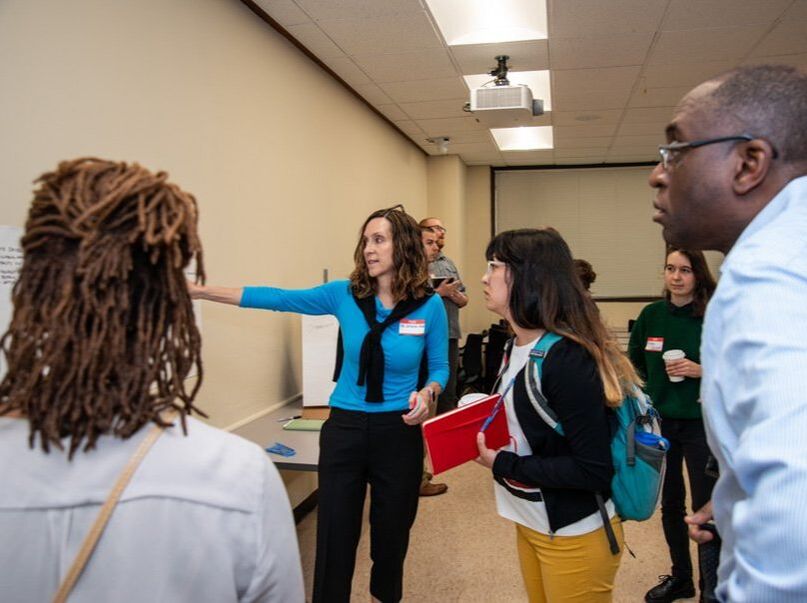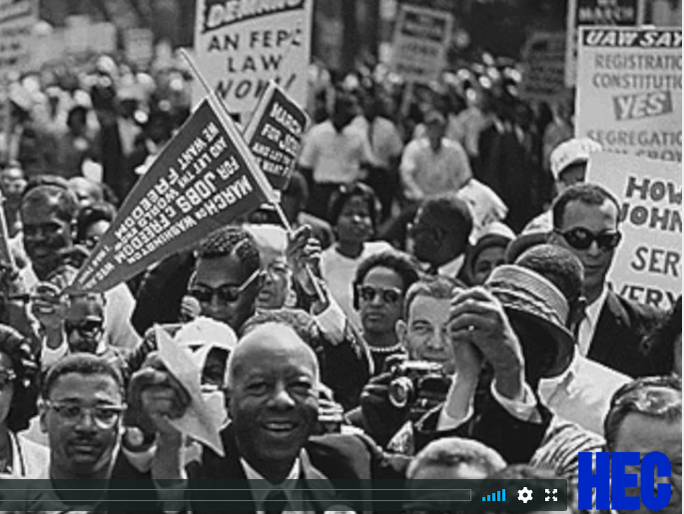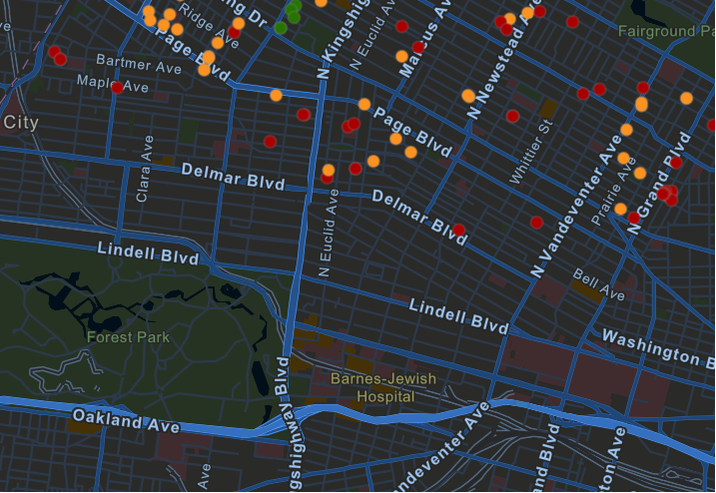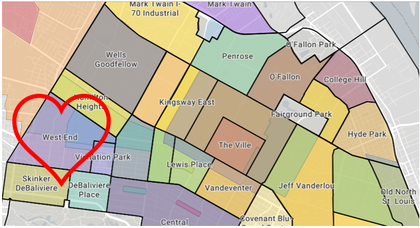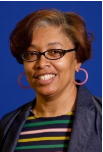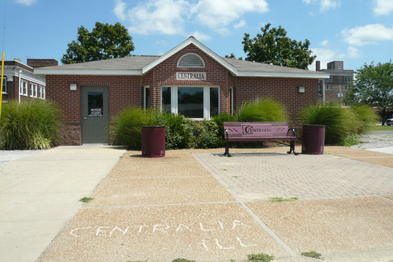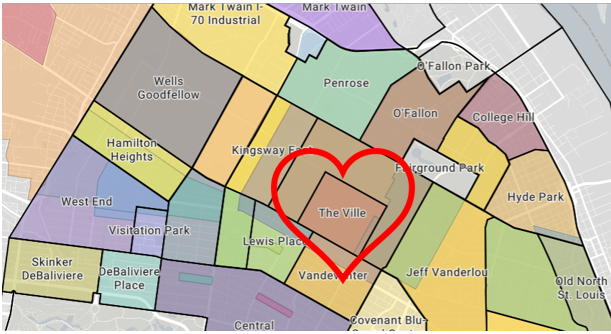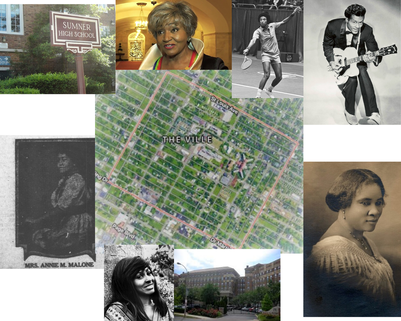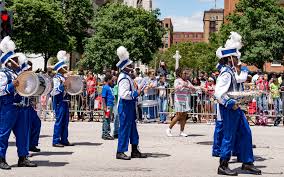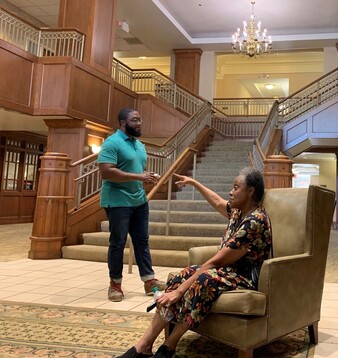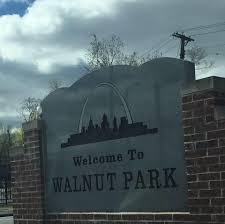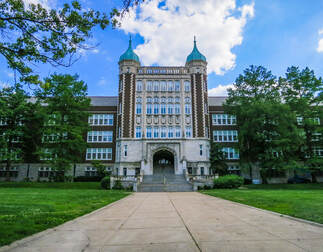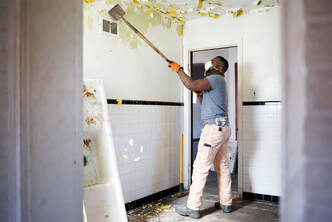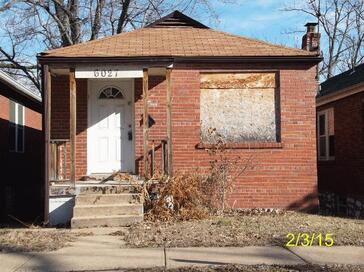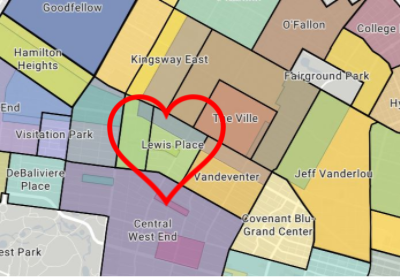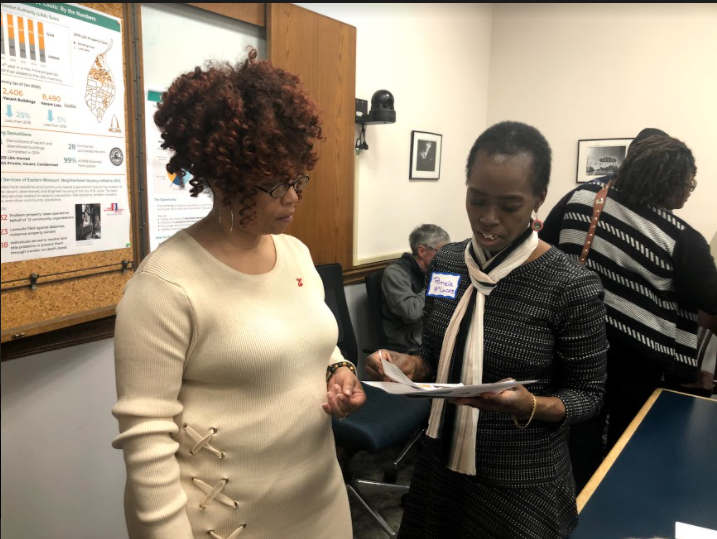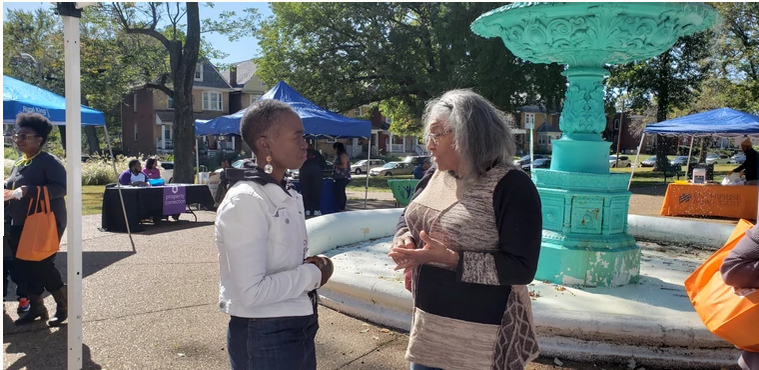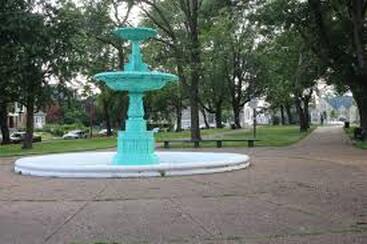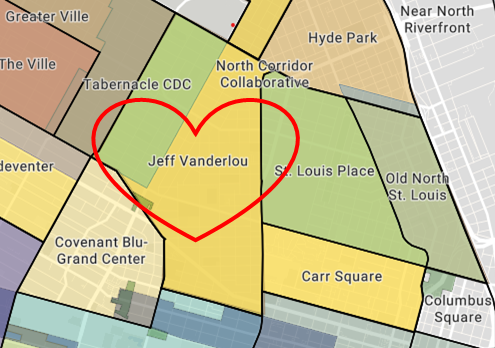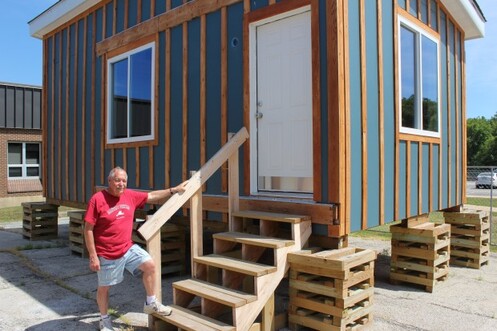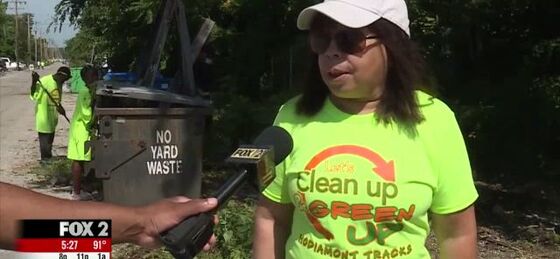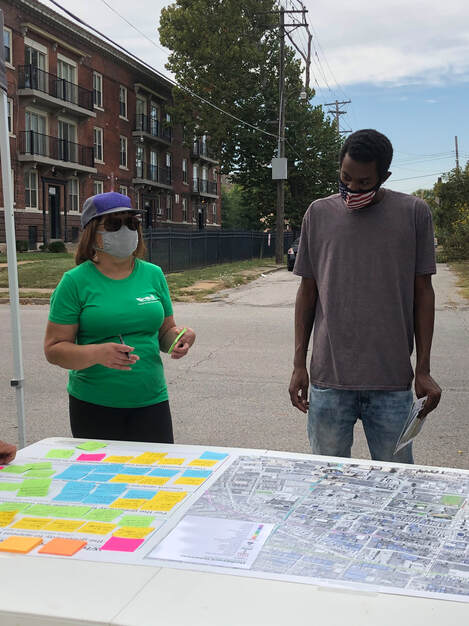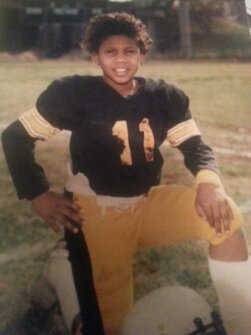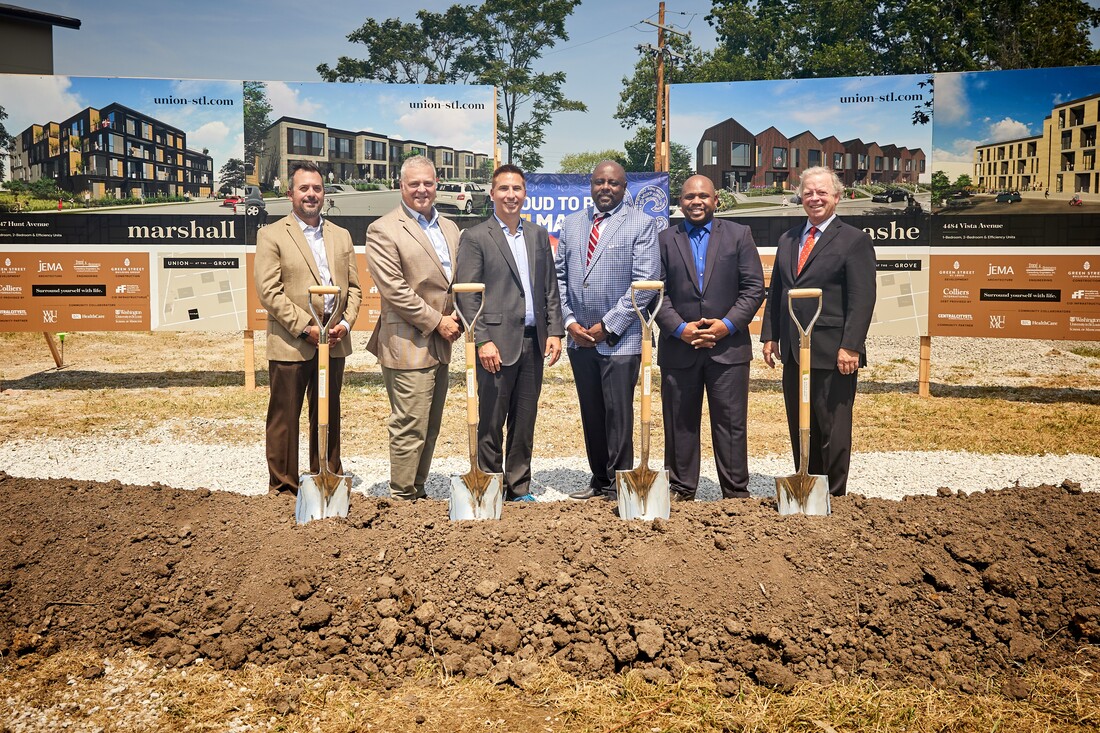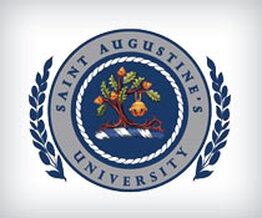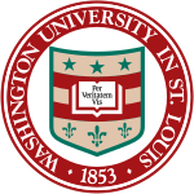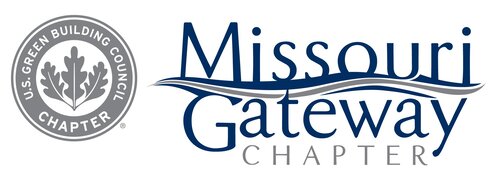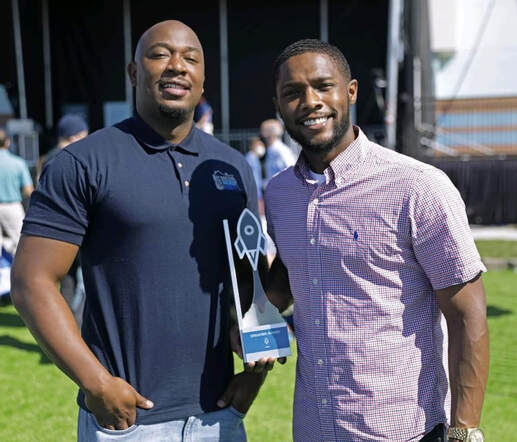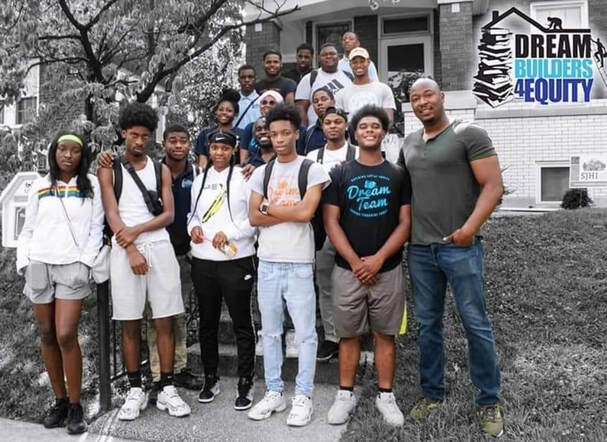Sign up for the email newsletter
You should receive a confirmation email after successfully signing up.
Funding RecommendationsWith the influx of ARPA funds to St. Louis, the Vacancy Collaborative advocates for increased funding to address vacancy. Through conversations with Vacancy Collaborative members, we have developed the a range of priorities for city funding. Check out our funding recommendations here.
|
Newsletter Archive
We regularly send out emails to notify everyone of the Vacancy Collaborative's activities and related news.
Racial Equity SpotlightThese articles, reports, and calls to action have been shared in our regular newsletters and are all in one place here.
Telling the Vacancy Story
Mrs. Tonnie Smith has been a resident in the West End-City of St. Louis for the last 13 years. Although she is an active member in her community, her humbled beginnings began in Centralia, Illinois just east of Missouri. Tonnie grew up in the small town with a population of 12,000; it was the type of community where residents would leave the front doors open. Tonnie’s mother was 17 years old when she gave birth to her and was a brilliant woman who had already graduated high school by the time Tonnie was born and was looking to pursue a career in Nursing. Tonnie’s Grandmother stepped in to help raise her brother and her in Centralia while her mom went to school to become a nurse in Peoria, Illinois. After nursing school, Tonnie and her brother moved to Peoria where she got her first taste of living in a big city, and she loved it. She remembers back in the 70’s communities being safe havens where one could ride bikes up and down the streets and catch the city bus to the library and come back home late at night with no worries.
In 1985, when Tonnie turned 16 years old her mom passed away, and she and her siblings had to move back to Centralia with her Grandparents. It was at this moment that Tonnie got a taste at having her first job. Her 2 uncles worked a paper route and every afternoon they all would pitch in by placing rubber bands around the newspapers. When Tonnie turned 16, she landed her first telemarketing job where she sold tickets to a magic show. Some of Tonnie's fondest memories were attending the Heart of Illinois Fair which isn’t as big as a state fair, but they would always have concerts with upcoming music artist, and her first concert was The Sylvers and she couldn’t wait til they sung Boogie Fever which was one of their biggest hits. After high school Tonnie attended Lincoln University located in Jefferson City, Missouri where she received a B.S. Degree in Fashion Merchandising and Marketing. While attending Lincoln University Tonnie pledge Alpha Kappa Alpha Sorority, Inc. Joining the sorority introduced Tonnie to community service and working collaboratively to achieve goals
After college, Tonnie relocated to St. Louis and got settled into adult life. She worked in retail management for 13 years and then Branch Banking management for 8 years while getting married and giving birth to her daughter. Moving forward, Tonnie stated about 6 years ago she started looking into how her neighborhood could become vibrant and resilient for all. So, she set out on a journey to get educated and involved in making things happen. Tonnie began by listening to many webinars, attended many seminars and meetings on neighborhood revitalization, and rose to become a Lead Neighborhood Advocate of the West End Neighborhood. Some of her collaborative efforts and community training include participating in the Neighborhood Leadership Academy through UMSL/Mizzou Extension - Spring 2017. She went through a Certificate Program through UMSL in Spring 2019 and completed the 2019 Cohort of the Neighborhood Leadership Fellows which is a 10-month program that focuses on Policy Initiatives and how residents can be involved and informed. Tonnie is an active Board Member of Cornerstone/ member of the Community Development Committee and a planning team member of InvestSTL West End Plan to develop a comprehensive neighborhood plan. She is also working with Peter Hoffman and LaTasha Barnes of Legal Services of Eastern Missouri and a group of residents to reduce vacancy in the West End. These many endeavors keep Tonnie very busy, and she continues to be a beacon of light for her community.
|
|
Photo of Tonnie Smith presenting at the 2019 Vacancy Collaborative Summit. Photo Courtesy of Chuck Ramsey of Legal Services of Eastern Missouri
|
Photo of Vacant Parcels included in the West End Community Plan Footprint. Published on: West Plan
|
Mrs. Julia is a 70-year-old resident of The Ville. The Ville was the cornerstone of the Black community and boasts an assortment of historical buildings and who’s who in the Black community. Growing up, Mrs. Julia attended Marshall Elementary, Turner Middle, and Sumner High School, respectively. She was raised with 4 siblings, a brother and sister, and she herself was a twin. Ms. Julia gave birth to two children, a son and a daughter who passed on.
Growing up in The Ville, the older residents pushed the youth to strive for excellence. Ms. Julia remembers one of her first jobs was working downtown for a company called Graymont selling dry goods. She also worked at Homer G. Phillips as a mail clerk and as a clerk in the radiology dept as a film librarian before they closed. She shared a story about the closing of Homer G. Phillips and how the community was outraged over the decision.
On a lighter note, growing up in The Ville was a close-knit community where everyone knew each other and looked out for one another. When the streetlights came on, all the kids had to be in the house and if a neighbor caught you doing wrong that neighbor had the right to discipline you. Ms. Julia stated that bad things happened in The Ville from time to time, but people still had moral character. Some of the events that were most memorable in The Ville was the annual Annie Malone Day Parade. Annie Malone was one of the first Black Female Millionaires and philanthropists who trained Madame C.J. Walker who also became world- renowned. She owned the Poro Building which housed the Poro College which was a school and manufacturing building to train young ladies in the cosmetology business. The building also housed black owned businesses, a branch of The Lincoln University Law School, an ice cream parlor, sewing rooms, auditorium, movie theatre, and neighborhood post office
On a lighter note, growing up in The Ville was a close-knit community where everyone knew each other and looked out for one another. When the streetlights came on, all the kids had to be in the house and if a neighbor caught you doing wrong that neighbor had the right to discipline you. Ms. Julia stated that bad things happened in The Ville from time to time, but people still had moral character. Some of the events that were most memorable in The Ville was the annual Annie Malone Day Parade. Annie Malone was one of the first Black Female Millionaires and philanthropists who trained Madame C.J. Walker who also became world- renowned. She owned the Poro Building which housed the Poro College which was a school and manufacturing building to train young ladies in the cosmetology business. The building also housed black owned businesses, a branch of The Lincoln University Law School, an ice cream parlor, sewing rooms, auditorium, movie theatre, and neighborhood post office
Ms. Julia stated she noticed the community started to decline after desegregation in the mid 70’s. She noticed one by one all the Black professionals started to move out to the suburbs. Looking back, Ms. Julia stated that she cannot remember one Alderperson who tried to stop the crumbling of The Ville; it was as if everyone was looking for an excuse to leave not knowing everything they needed was right under their nose. A Pastor by the name of James E. Cook was a very prominent leader and very active in the community. He kept the light of hope burning in the heart of The Ville and there is even a statue of him in the Bayer YMCA. Ms. Julia stated that some of the many misconceptions about The Ville is that it is crime ridden and, full of poor people with no education who do not care about their community.
Photo of Bayer YMCA Lobby. Published by: Gateway Region YMCA
Ms. Julia hopes that she can bring more recognition to The Ville, so that it can become a beacon of light and return to its former glory to bring awareness and money to the community. She wants politicians to stop making decisions for our communities without our input and start listening to us.
There is a new hospital being built on Jefferson that will be named the Homer G. Phillips Hospital which Ms. Julia says does not sit right with The Ville residents since the original building still sits in the historic The Ville. When asked what should the new hospital be named? The suggestion was Captain Wendell-Pruitt Hospital after the famous Tuskegee Airman whose name was included on the original buildings that used to sit in the very spot. The famous Pruitt-Igoe.
There is a new hospital being built on Jefferson that will be named the Homer G. Phillips Hospital which Ms. Julia says does not sit right with The Ville residents since the original building still sits in the historic The Ville. When asked what should the new hospital be named? The suggestion was Captain Wendell-Pruitt Hospital after the famous Tuskegee Airman whose name was included on the original buildings that used to sit in the very spot. The famous Pruitt-Igoe.
Eltoreon Hawkins is 26 years old and was born and raised in the small community of Walnut Park, located on the Northside of Saint Louis. In the early ‘90’s, Eltoreon and his three siblings, two sisters and one brother, were raised by a very overprotective mother, Mrs. Tryanna Pippen’s, who didn’t allow them to go outside and play in the community, so they spent a lot of time in the house being creative and entertaining themselves. Many times, Eltoreon found himself looking outside his window and seeing kids riding their bikes up and down the street and wondered what that would be like. Over many seasons of constantly begging his mother if he could ride his bike outside, she finally gave in, but only if he wore protective gear which consisted of a bike helmet and pads. He would ride up and down the sidewalk, but as soon as he was out of his mother’s sight, he would take off the gear and hide it in the bushes and ride in the street with the kids in the neighborhood. Eltoreon attended Herzog Elementary and later attended Northwest High School, briefly. It was at this critical point in life were Eltoreon started going down the wrong path, so his mom sent him to live with his aunt and uncle for the summer.
|
Photo of Eltoreon Hawkins (right) and Angela Drake (left) presenting to the Reclaiming Vacant Properties Center for Community Progress Conference.
|
Photo of Walnut Park Neighborhood Welcome Sign. Published On: Walnut Park East Neighborhood Association
|
Photo of Herzog Elementary School. Published On: St. Louis Public Schools
|
His uncle Joe drove for Allen Cab, and he noticed that his uncle would come home every night with a lot of money from work which he used to take care of his family. Eltoreon noticed that with the earnings his uncle made from driving a cab, he was able to purchase a home, a car, and take care of his family all while being a middle school dropout. Over the summer, Eltoreon and his uncle would have many conversations which gave him the foundation to get focused, because one day he would have his own family to raise.
He returned to Roosevelt Highschool in the fall with a drive to succeed. One of the classes he took a liking to was shop class which was taught by Mr. Bart who allowed him to stay after school and build bookshelves and dog houses. When the students would come back to shop class the next day, they would notice these projects over to the side and ask who built them. The shop teacher would say, “those are Eltoreon’s projects.” Shortly after, other students started staying after school in the shop class. Eltoreon was instrumental in helping to create the after-school shop program, and he stays in contact with Mr. Bart until this day.
Eltoreon’s first job was working for Operation Brightside where he and other young men helped clean up the community. He also worked for Millennium Restoration rehabbing houses in South City. Some of Eltoreon’s fondest memories growing up in Walnut Park were at the annual neighborhood block party on Schulte and when his neighborhood Block Captain would gather the youth in the community for a trip to Six Flags.
In 2017, Eltoreon helped create the Finest 15, a program which highlights 15 of the best vacant properties in different neighborhoods in the City. He was motivated by his mentor, past Aldermen Chris Carter, who would take him to community meetings in Walnut Park. When Eltoreon purchased his first house from the Land Reutilization Authority (LRA), the City’s landbank, and started rehabbing it, Chris Carter took notice and started bringing Eltoreon to a lot of community meetings. At these early meetings he started building relationships in the political arena that he still maintains now. “During the Obama/Trump Administration people outside the community saw the Walnut Park area as a very violent area, and it truly doesn’t have much violence, but it does have a drug problem, but no different than any suburb.” Eltoreon stated that he would love to see the block parties and the block captains getting back involved with the youth. “I want to mix fun and community building together. By doing this it will help to unify the community and get them back involved in being a positive force in the community.”
|
Photo of the Before and After of a Rehab Project. Photo Courtesy of Eltoreon Hawkins
|
Pamela McLucas returned to her family home by heirship expanded by her perception of how the community is built. In 1986, her parents purchased a home with the expectation of gaining property equity and passing the investment along. In 1998 she was married, and Pamela and her husband purchased their own home in the Lewis Place Neighborhood.
Pamela’s residency in the Lewis Place Neighborhood enabled her to serve both Lewis Place and the Fountain Park Neighborhoods. As a Real Estate Business owner, she organized neighborhood clean ups through Operation Brightside and the City of St. Louis Streets Department and collaborated with neighborhood groups, like St. Louis Job Corps and Dream Builders 4 Equity on two different occasions. Pamela’s desire is for the community to make sound, educated decisions on how to handle their real estate investments
Photo of Pamela McLucas in front of the Lewis Place Neighborhood Sign. Published on: TechArtista's Member Feature
Pamela continues to work tirelessly to ensure that quality affordable housing is attainable while encouraging young families to move into her neighborhoods, so it will be more attractive to businesses and schools. Pamela presently serves as Vacancy Prevention Co-Chair for the St. Louis Vacancy Collaborative and as a member of the Community Land Trust for the St. Louis Steering Committee.
Her experience as a real estate professional affords her to work with developers daily. Presently she serves as Secretary for Park Place Housing and Economic Development, Inc, which is a member of the Community Builders Network She is also a member of the Delmar Corridor Collaborative. Pamela recently joined the St. Louis team for the Strategic Code Enforcement Management Academy. She also is a member of the St. Louis Association of Realtors, the Missouri Association of Realtors, and the National Association of Realtors. In 2003, Pamela was inducted as the St. Louis Chapter for Women's Council of Realtors and has served on multiple local real estate committees while being a member of the Holy Ground Collaborative and STL Village Community Education Committee. In 2020, she also served as the interim Committeewoman for the 18th Ward after the passing of Committeewoman Ellen Todd and after being nominated by John Watson for approval by the Democratic Central Committee.
|
Pamela talking to a community member during a Park Place Event. Retrived from: Park Place Home Repair Fund
|
The Fountain in the Fountain Park Neighborhood. Published on: Wikipedia Creative Commons
|
Pamela McLucas stated that it is a privilege to serve and grow where a difference can be made. Community starts with people, and the people should have a voice for their desires and thoughts. The community deserves to have a listening ear to the ground and be able to vocalize their needs through the representative who takes their interests to heart.
Bob Marshak was born and raised in St. Louis. The oldest of 3 children, he and his siblings went to University City schools, and after high school, he joined the military. That was at the beginning of the computer age, he had the opportunity to attend many IBM technical schools and learn computer technology at an Army data center in Virginia. After two years, he returned to St. Louis and started a family. Bob started working as a civilian for the Department of Defense and retired after over thirty years as Deputy Director of a systems design and development agency. Bob’s wife, Dianne, was always focused on homelessness and the inequities surrounding economic injustice. Together, they joined Bernie Sammons, a retired plant scientist, and formed a faith-based group in St. Louis County in 2016, determined to foster a greater understanding of the negative impact of racism and economic injustice in the St. Louis Area. Social Justice 4 All (SJ4A) joined The Ville Collaborative and has become a partner in many of their projects and efforts, with goals to improve the lives of the residents of the Ville and Greater Ville.
"Bob Marshak, of Social Justice 4, All checks the tiny house built by geometry students at Eureka High School."
Source, Jim Erickson photo.
Source, Jim Erickson photo.
A significant effort of SJ4A was to address the issue of homelessness, and research showed that many metropolitan areas around the country were using tiny houses as transitional housing. In 2016 Dianne Marshak met with Father Gary Meier, then Executive Director of North Grand Neighborhood Services (NGNS), a non-profit dedicated to providing affordable homes in the Jeff-Vander-Lou neighborhood. NGNS donated a city lot at 3633 North Market to the effort to begin the first project in the City of St. Louis to use tiny houses for the homeless and for those at risk of being lost.
As part of their grassroots outreach, NGNS and SJ4A reached out to local churches, which led them to one enthusiastic parishioner’s school district for a partnership” (Engel, 2018). The Rockwood School District in St. Louis County was beginning a program to combine geometry with a practical application of the math concepts called “Geometry in Construction.” Rockwood’s Summit and Eureka High School students built the first two houses during the 2017-2018 school year. “On a pro bono basis, a well-known architectural firm volunteered to complete the tiny house design and specifications and handle the permitting process with the city of St. Louis” (Erikson, 2018).
As part of their grassroots outreach, NGNS and SJ4A reached out to local churches, which led them to one enthusiastic parishioner’s school district for a partnership” (Engel, 2018). The Rockwood School District in St. Louis County was beginning a program to combine geometry with a practical application of the math concepts called “Geometry in Construction.” Rockwood’s Summit and Eureka High School students built the first two houses during the 2017-2018 school year. “On a pro bono basis, a well-known architectural firm volunteered to complete the tiny house design and specifications and handle the permitting process with the city of St. Louis” (Erikson, 2018).
Students from Eureka High School in front of Tiny House Project, Source.
Updates on the Social Justice 4 All website states, “The houses have been transported from the schools to the site at 3633 N. Market thanks to HWP Rigging”. The houses are placed upon permanent foundations connected to MSD, City water, and Ameren. Volunteers completed all interior finishing. Both houses built by the schools are now complete and occupied by formerly homeless individuals.” The third house is now under construction. The pandemic restrictions halted most work by volunteers, and a construction company built the framing, but currently, volunteers are working on completing the job and finishing the interior. Many community businesses and individuals are generously contributing building materials and specialized skills to ensure the house will be concluded by the end of the 2020 fiscal year.
Tiny houses are being placed in JeffVanderLou neighborhood in North City, Source.
The next step is critical. County students at Rockwood schools learned a great deal about geometry and construction and the needs of those less fortunate. It was a top-rated program at Rockwood; it started with one class at each of two high schools and now is in four schools with seven courses. SJ4A’s goal is to begin Geometry in Construction class at an SLPS high school as a pilot program to provide the same opportunities to City students. The Covid pandemic indeed halted any progress on that effort, but it remains a high priority. The trades are a viable option to college for many students, and the opportunity to combine studies with a practical application of learned skills should be an option. “For good measure, they want city school students to be a part of it.” (Beene, 2019). The North St. Louis construction project spearheaded by Social Justice 4 All and the North Grand Neighborhood Services (NGNS) has provided homeless individuals with permanent, energy-efficient housing. Dianne Marshak said, “No one should have to live on the streets. Shame on our society for not solving this issue.” (Engel, 2018).
Bob stated, “Tiny houses are cost-effective and are being used in other cities to address homelessness issues. St. Louis can be next. Together, all of us can make a difference in the lives of those who face this trauma.” (Engel, 2018)
Bob stated, “Tiny houses are cost-effective and are being used in other cities to address homelessness issues. St. Louis can be next. Together, all of us can make a difference in the lives of those who face this trauma.” (Engel, 2018)
Sources:
https://westnewsmagazine.com/2018/08/12/98917/west-county-residents-educators-help-give-tiny-house-program-a-successful-start
https://metrostl.com/2019/09/19/tiny-houses-are-big-idea-for-homeless-plus-city-students/
https://nextstl.com/2018/03/tiny-houses-for-st-louis-homeless/
https://socialjustice4all.org/projects/tiny-houses/
https://westnewsmagazine.com/2018/08/12/98917/west-county-residents-educators-help-give-tiny-house-program-a-successful-start
https://metrostl.com/2019/09/19/tiny-houses-are-big-idea-for-homeless-plus-city-students/
https://nextstl.com/2018/03/tiny-houses-for-st-louis-homeless/
https://socialjustice4all.org/projects/tiny-houses/
Judith Arnold is a professional Urban Planner with a passion for working in underserved communities. Her humble beginnings began in Cleveland, Ohio, where she grew up under her father’s music abilities, a well-known jazz artist and the music director of Quincy Jones. Her dad taught her the piano and an appreciation for the classics. Practicing renditions of Beethoven, Bach and Mozart were her daily routine, so was schoolwork. Judith was the first African American to graduate from St. Joseph Academy. She enrolled in Cleveland State University, earning degrees in Urban Planning and History. Her studies helped shape her outlook on life. She was mentored by Julian Bond, Fannie Lou Hammer, Don L. Lee, and the National Urban League Housing Director J. Harvey Kerns. She submerged herself in the readings of Angela Davis, Stokely Carmichael, and many more. Judith was fascinated by the Great Migration of African Americans to cities and focused on communities of color’s economics.
After graduation from college, Judith became an AmeriCorps VISTA, volunteering for a year in Kansas City to repair homes in an inner-city neighborhood. Here, says Judith, “this neighborhood was destroyed by the riots of the ’60s. A group of Black Panther activists purchased several vacant houses and wanted to restore these. I was anxious to help even though my skills were next to nothing. But, I could learn. So, a construction tradesman taught me how to recover roofs, paint, refinish floors and refurbish bathroom fixtures.” Judith was selected by the CORO Foundation as a Fellow to study St. Louis. “I concentrated on community development and held internships at Gateway National Bank, St. Louis Community Development Agency, Amalgamated Clothing, and Textile Union, media outlets, and political campaigns. “I wanted a well-rounded background in the community development and to learn the role of these institutions in the St. Louis community.” Then she enrolled in Occidental College to complete a master’s degree in Urban Planning and Public Administration.
Photo of Judith Arnold at the clean up of the Hodiamont Tracks, Source: Fox 2.
Returning to St. Louis, Judith learned the rigors of urban planning under the skillful tutelage of Donald Spaid, Executive Director of the St. Louis Community Development Agency. Jointly they built the capacity of Union Sarah Economic Development Corporation and successfully won the first Urban Development Action Grant from HUD for the city to rehabilitate 150 vacant housing units for low- and moderate-income families (along Enright Avenue). Judith also worked on rehabilitating the old vacant General Van Lines building (Euclid and Delmar), turning it into the Central West Plaza with office space. Judith’s work pioneered current development efforts in Vandeventer and Fountain Park neighborhoods.
When federal funds for urban communities began to dry-up, Judith turned to the private sector for employment. She found Brown Shoe Company needed a planner for 50 shoe stores in various mall locations throughout the country. She jumped at the chance.
When federal funds for urban communities began to dry-up, Judith turned to the private sector for employment. She found Brown Shoe Company needed a planner for 50 shoe stores in various mall locations throughout the country. She jumped at the chance.
However, Judith wanted to go back to communities. She was hired as the Director of Development for Ecumenical Housing Production Corporation, and later the Archdiocese of Belleville as the Director of Foundations for St. Mary’s Hospital in East St. Louis. Here she provided safe rehabbed housing for 100 children who lived in lead affected conditions. Then she became the Director of Development for Catholic Charities of St. Louis, where she responsibly arranged housing rehab grants and other programs to meet the poor’s needs. With ten years of community service, Judith's largest reuse project doing this time was the conversion of a vacant Catholic convent and school into housing for homeless men (Greater Ville) who were fathers of children and wished to become a part of their lives again. “This program offered housing and social services,” Judith said. She also said, “Housing these men became essential to the delivery of resources; successful outcomes were full employment, abilities to make regular child support payments, in some instances child custody, substantiated paternity, and legal assistance when needed. After completion, the men were able to live independently. And just as important, rehabilitation of this rather sizeable vacant space helped to stabilize the area.
Judith Arnold continues to bring resources to St. Louis communities. She is rooted in the vacancy issues addressed by the SLACO Board and the Vacancy Collaborative. She is a Planner for the Greenway on the Hodiamont Tracks, a 3.5 capital improvement along the vacant streetcar right of way and spanning across seven neighborhoods north of Delmar Boulevard: Covenant Blu-Grand Center, Vandeventer, Lewis Place, Fountain Park, Academy, Visitation Park, and the West End. She is a founder of the Delmar Collaborative, which also brings together the same neighborhoods while working on mutual interests with the Central West End and Skinker DeBalievere to improve Delmar’s image. Judith is instrumental in arranging tours for residents and others for SLACO’s Neighborhoods United for Change, a program that premiers neighborhoods north and south of Delmar and where residents can discuss differences and commonalities of city living. There will be 15 tours this year, and some will be virtual until later in the year. “The days of working in silos is over, says Judith; neighborhoods benefit more when working in harmony with others. After all, neighborhood problems are similar.” You can find Judith working with Missouri Senator Steven Roberts on legislation to reduce tax increases for elderly homeowners aged 65 and older.
Judith Arnold continues to bring resources to St. Louis communities. She is rooted in the vacancy issues addressed by the SLACO Board and the Vacancy Collaborative. She is a Planner for the Greenway on the Hodiamont Tracks, a 3.5 capital improvement along the vacant streetcar right of way and spanning across seven neighborhoods north of Delmar Boulevard: Covenant Blu-Grand Center, Vandeventer, Lewis Place, Fountain Park, Academy, Visitation Park, and the West End. She is a founder of the Delmar Collaborative, which also brings together the same neighborhoods while working on mutual interests with the Central West End and Skinker DeBalievere to improve Delmar’s image. Judith is instrumental in arranging tours for residents and others for SLACO’s Neighborhoods United for Change, a program that premiers neighborhoods north and south of Delmar and where residents can discuss differences and commonalities of city living. There will be 15 tours this year, and some will be virtual until later in the year. “The days of working in silos is over, says Judith; neighborhoods benefit more when working in harmony with others. After all, neighborhood problems are similar.” You can find Judith working with Missouri Senator Steven Roberts on legislation to reduce tax increases for elderly homeowners aged 65 and older.
Abdul-Kaba from Walnut Park to Park Central: The Man with the Plan
Abdul-Kaba (Kaba) was born in 1978 and grew up in a 2-parent household. Abdul was raised in Walnut Park, then his parents moved the family to the Penrose neighborhood at the age of nine. Abdul was born in Indianapolis and at 1 month old came back to St. Louis with the rest of his family. Abdul’s biologically father is from Sierra Leone Muslim, and Abdul was given a Muslim name at birth. Abdul-Kaba (means Servant of God). Abdul’s grandfather Alieu Sheikh Abdullah, MA, DDS, MPH was appointed the first Principal Dental Surgeon with the Ministry of Health and, on retirement from the Sierra Leone Government in 1981, he served as a consultant with the World Health Organization.
Abdul was raised by his father William (Butch) and mother Nailah Hardrick who had 6 children: his brothers Butch, Haron, and Ahmed, and 2 sisters, Shauna, and Lisa. Education was a strong foundation in the family, and Abdul witnessed his father’s work as a building inspector with the city of St. Louis, and his mother’s as well serving as the secretary of the Music Department at UMSL. His mother obtained her degree in 1998 from UMSL in Counseling. She later earned a Master’s in counseling with an emphasis in drug addiction on women who are bi-racial.
Abdul’s dad, who was 5’7 in stature, was kicked out of University City Highschool for leading civil rights marches and later earned a GED and became a published author in Readers Digest. His father came from humble beginnings in the West End of St. Louis, and as an adult became a Building Inspector for the City of Saint Louis. He was a mentor to many young men and women and lived by the belief that “your name is all that you have.” That is why your word and how you treat people are so important. A good name is more desired than Silver or Gold.
Growing up, Abdul loved sports. His parents signed him up to play football for Mathews-Dickey Boys and Girls Club, and his allegiance to the sport led him to become a running back in high school. Abdul’s father had him reading the autobiography of Malcolm X in the 3rd Grade and exposed him to different cultural influences in the community. He was befriended by a gentleman named Mark Howard who just so happened to be a member of Alpha Phi Alpha Fraternity, Inc. who gave him his first job at the Negro League Baseball Store in St. Louis. When the job ended, Abdul remembered how Mark gave him $1,000 worth of Black Ball Gear and his Alpha History Book.
As a teenager Abdul enjoyed watching shows like “A Different World” which made him want to attend an HBCU, and he had dreams and aspirations of attending Bowie State or Howard University. He later received an athletic scholarship in 1997 to Northwest Missouri State University and majored in Geography and Public Administration. In College, Abdul met Jermell Harris who was also a member of Alpha Phi Alpha Fraternity, Inc. at Northwest Missouri State University (Rho Theta Chapter) which was chartered in 1988. Abdul felt that Jamel was a class act, because he witnessed Jamel helping Black students stay in school and have a voice. Abdul joined Alpha Phi Alpha Fraternity, Inc. the following semester in the Spring of 1998.
Abdul recalled the day he messed up his knee while playing football in his 3rd season in college. His mom had driven up to the game to see him play, and he remembered tearing his ACL running down the field, while his mother looked on in the stands. He had to be carried off the field and later found out that he not only tore his ACL, but also his MCL and Meniscus, and his football dreams were cut short.
While his football career was cut short, that didn’t stop Abdul and his passion to become a servant of the people. One of Abdul's fondest memories was working on the board of the MLK Memorial which is located on the Mall in Washington D.C. Being on this board while in college taught him the basics of fundraising for the memorial, and this knowledge continues to help him in his current and future endeavors.
Abdul recalled being in Washing D.C. on 9/11 doing an internship and was on the Hill and remembers the security team evacuating everyone. As an active member of Alpha Phi Alpha Fraternity, Inc., Abdul burned the candle on both ends to become the Regional Assistant Vice President within the National Board of the Fraternity, and this is where he cut his teeth learning governmental structure in the fraternity. He also became assistant District Director of the State and recalled when his Alpha Brother, Anthony Billinger, bought him his first suit.
After graduation in 2002, Abdul moved back to Washington D.C. to work on the Hill. After a brief stint, he made his way back to Missouri to attend Webster University for graduate school and worked at Better Family Life under the mentorship of Mrs. Seward. Abdul worked in the MET Center and learned how to build an organization from the ground up. The organization had 250 employees and raised over 10 million dollars. While working with Better family Life, he met community leaders James Clark, Mike McMillan, Kevin Bryant, and Sal Martinez.
From 2012 to 2013, Abdul worked for the Affordable Housing Commission as the Community Development Specialist, because he wanted to get into economic development. He later befriended Ted Hoskins who is known as the Godfather of St. Louis County Politics in the City of Berkeley. Ted mentored him to become the City Manager of Berkeley, MO. Abdul was only City Manager for 30 days when Mike Brown was killed. Since Berkeley and Ferguson are adjacent to one another, Abdul felt the heat from the flames and the training wheels were off. This is where he learned to govern, and his life changed overnight. Abdul saw firsthand how the media twisted the stories around Ferguson and these stories were tearing apart the racial fabric of not only Ferguson, but the St. Louis region. This compelled Abdul to start working on police reform, and he passed policies for police body cams. Berkeley also stopped prosecuting people for petty crimes and changed zoning laws. The city credit rating was in debt at the time, but soon rose under his leadership. Being a City Manager changed how Abdul protests, and he now protests by changing policy.
In 2017, Abdul was hired as the Executive Director of Park Central Development. Some of his job duties include neighborhood support, anti-displacement, and revitalization so businesses can thrive. He also works with communities and multiple stakeholders to build strong urban neighborhoods where people can work and live. Park Central serves 11 neighborhoods within the Central Corridor of the City which includes, The Grove, CWE, Academy, Fountain Park, and the West End. During his time at Park Central, he has helped to facilitate over 1 Billion Dollars in development in the City and has begun to tackle his biggest career challenge, which is to bridge the Delmar Divide.
Overall, Abdul’s goal is for the City Saint Louis to become a heartbeat for Black, Brown, and every marginalized group in this region. He sees Saint Louis becoming the model for other cities to follow.
Brian Hurd is originally from Virginia Beach, Virginia. Growing up as an only child, he was mentored by his uncles who were like big brothers. Being the oldest grandchild with no older siblings, Brian was nicknamed by his youngest cousins as "Uncle Cuzzo," cuzzo being a term of affection for cousin. At family functions, such as Thanksgiving, Brian found himself gathering his cousins and sharing words of wisdom over the toast for the grandchildren.
After graduating from Green Run High School in 1988, Brian attended Saint Augustine’s University in Raleigh, North Carolina, an HBCU, where he majored in Organizational Communications. In the Fall of 1989, Brian was initiated into Alpha Phi Alpha Fraternity, Incorporated, the nation’s oldest Black Greek-letter intercollegiate organization and member of the Divine 9. After graduating in 1992, Brian began his commercial insurance career in Charlotte, North Carolina and Hartford, Connecticut before setting his sights on attending graduate school at Iowa State University in Ames, Iowa. At Iowa State University he earned his Masters in Community and Regional Planning. Iowa holds a special place in Brian’s heart, because that is where he met his wife Rhonda, who was at the time attending the University of Iowa.
|
SAU logo. Published at st-aug.edu/for-the-media
|
Iowa State logo. Published at iastate.edu
|
Brian first visited St. Louis in 1995 for a wedding when a friend from graduate school at Iowa State got married. Brian stated that St. Louis was a city with so much history and lots of Fortune 500 Companies. After returning to Virginia in 1997 and working as a city planner for the City of Norfolk, he eventually returned to Saint Louis in December 2001 after just getting married. His wife was employed with Monsanto, now Bayer. He soon landed a job with Rise Community Development in 2003 as the Technical Assistance Program Manager, and he has been with the organization since. Now as Director of Community Planning and Implementation with Rise, his job duties include planning and community development, providing technical assistance and training to community development corporations, housing development, asset management, and lending and business support through Rise CDFI, Inc.
Brian is heavily involved in the St. Louis region. He was given the highest honor in his local fraternity Alumni Chapter serving as the President of Epsilon Lambda (Graduate Alumni Chapter) from 2014-2017. As a member of an organization of educated black men, Brian helped lead successful youth investment efforts throughout the St. Louis region and in Ferguson, Missouri during the aftermath of Michael Brown's tragic death.
Epsilon Lambda logo. Published at www.aphia-epsilonlambda.org
Brian is also an adjunct professor and field instructor at Washington University in St. Louis. As his website states, “he is dedicated to positive change by developing a new generation of dynamic young leaders to serve in communities experiencing inequalities and disparities. He prepares diverse students to be better trained and equipped to help improve outcomes for youth and families by effectively addressing social and economic development conditions. By educating, coaching, and mentoring young people, Brian is empowering young leaders to produce a healthier environment and better living conditions for all people that is intentional, fair, and just.”
Washington University logo. Published on Wikapedia en.wikipedia.org/wiki/Washington_University_in_St._Louis
In 2020, Brian published an Amazon best-selling book titled, "Dream it! Plan it! Be it! A Playbook for Today's Youth." Brian shared that his motivation for writing the book was for young children who didn't have a positive male in their life. He stated that he stayed up late many nights wondering if he could give words of wisdom to his young people. Young people and communities of color are experiencing many disparities and inequalities. Brian believes young people are essential to successfully build diverse and inclusive communities of lasting value. His mission is to improve the well-being of neighborhoods and communities. He does so by connecting and expanding access to opportunities in places where children and families can enjoy life, work, and play safely.
Brian's Book Cover. Published on https://brianhhurd.com/about
When asked what St. Louis must do to be a better region to attract and maintain young leadership, Brian stated that he believes youth must be at the center of our solutions and our investment for the future. “Our investment must focus on building hope, aspirations, and inclusion for all people. It takes a village working together to improve the prospects and outcomes for young people. Further, we must work collectively to make an impact that will interrupt a cycle of inequities and disparities for many of our young people and their families. Investment in today's young generation will be essential to making our nation and local communities more competitive.”
With improved outcomes at the heart of inspiring victory in today's young people, Brian prescribes to the notion that elected officials along with business and institutional leaders must have a youth master plan. As leaders, we should work to ensure a better future. His prescription for parents, mentors, and local leaders includes building better communities, retaining black talent, rebuilding and reinvesting in urban historic neighborhoods, and helping existing talent prosper.
To this end, Brian works on many of these efforts through a number of boards and commissions as a director and commissioner, including: Alpha Terrace Development Corp., STL VentureWorks, Inc., Land Clearance and Redevelopment Authority of St. Louis, County, Eastside Aligned, Inc., U.S. Green Building Council – Missouri Gateway Chapter, St. Louis Vacancy Collaborative, OneSTL Food Access Work Group, and Alive & Well Communities, Inc.
Neal Richardson was born in 1987 in the Lewis Place Neighborhood. His mother worked in data entry for Centene Corporation, and his father worked as an electrician technician for General Motors in Wentzville. Neal has a younger sibling named Tina, who is 13 years old and one daughter named Harper
Neal started off attending Ashland Elementary in the Penrose Neighborhood from Pre-K to 2nd grade then Pershing and Stanton Elementary from grades 3 to 4. He later attended Rockwood South Middle School and Lafayette High school. Neal was very active in high school and participated in baseball and basketball. Playing sports taught him teamwork, and this was the first time he witnessed disparities of other cultures.
Neal started off attending Ashland Elementary in the Penrose Neighborhood from Pre-K to 2nd grade then Pershing and Stanton Elementary from grades 3 to 4. He later attended Rockwood South Middle School and Lafayette High school. Neal was very active in high school and participated in baseball and basketball. Playing sports taught him teamwork, and this was the first time he witnessed disparities of other cultures.
Neal's parents taught him at an early age about the meaning of hard work, and from the age of 13-16 years old, Neal landed jobs at a car wash, Six Flags, and as a peanut vendor every summer at Busch Stadium, where he stayed until adulthood. When Neal turned 21, he took a job at Schnucks and later Anheuser Busch, cleaning out beer tanks.
Published on www.stlmag.com/contests/cardinals-ticket-giveaway#//
After high school, Neal enrolled in a 2-year program at Ranken Technical College and, at 20 years old, earned a degree in Electrical Control Systems. Neal's next venture was to attend Webster University, where he majored in Business and got an internship with Cushman & Wakefield doing lease negotiations and control job titles. At 22, he landed a position at Barnes Jewish Hospital as a property manager in the hospital accounts department. After earning his MBA from Webster University, Neal started a new career at U.S Bank as a financial analyst and then an underwriter using federal new market tax credits and historic tax credits.
|
Ranken logo. Published on ranken.edu/
|
Webster University Logo. Published on webster.edu
|
Neal co-founded Dream Builders 4 Equity with Michael Woods, who he met in church in 2009, and they later became good friends. Michael shared with Neal that he wanted to help youth and the community that raised them. They both decided to invest in a nonprofit organization that hires minority contractors and city high schoolers to rehab derelict properties in north St. Louis, where the two grew up. Beaumont High school was the first group, and they rehabbed their first house in the Lewis Place Neighborhood. Five youth made $15 an hour and received a $1,500 stipend. A percentage of the property's sale is given to the students and placed towards a college fund. The program also has students journal about their experience, after which the journal is published and sold, with students receiving funds from the sales. Over the next five years, Richardson projects that 250 students will go through the Dream Builders 4 Equity Program. Besides rehab, the program has also provided home repair and landscaping support to over 50 seniors across St. Louis City.
Neal recently wrapped up a career with U.S. Bank as the director of the bank's Business Impact Group which helps minorities, people of color, and low-income communities obtain capital. Neal was approved in June 2021 by the board of St. Louis Development Corporation as the new executive director of the city's influential economic development arm. He replaced Otis Williams, who retired after holding the position since 1999.
SLDC Logo published on www.stlouis-mo.gov/government/departments/sldc/about-SLDC.cfm
When asked about what problems he wanted to address and the future of the city of St. Louis, he stated that he wanted to focus on building out the economic justice platform, addressing historical barriers, and helping close the wealth gap. SLDC will put together a team that will address workforce development, business empowerment, neighborhood stabilization, and revitalization along with a more equitable incentives model. By tackling these issues, SLDC will create opportunities for all families across our city.
Neal is also a board member of Artspace, Focus St. Louis, and was named to the 40 under 40 list by the St. Louis Business Journal.
|
Artspace logo. Published on www.artspace.org/
|
Focus STL logo. Published on www.focus-stl.org/
|
Media Archive


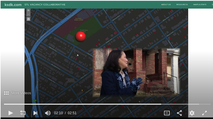
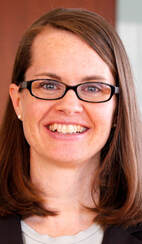
Dana Malkus: Disinvestment and crime have common cure — community
Jan 28 Op-ed by Dana Malkus in the St. Louis Post Dispatch
See all news
Jan 28 Op-ed by Dana Malkus in the St. Louis Post Dispatch
See all news



Want To Take a Look At Some Past Articles?






